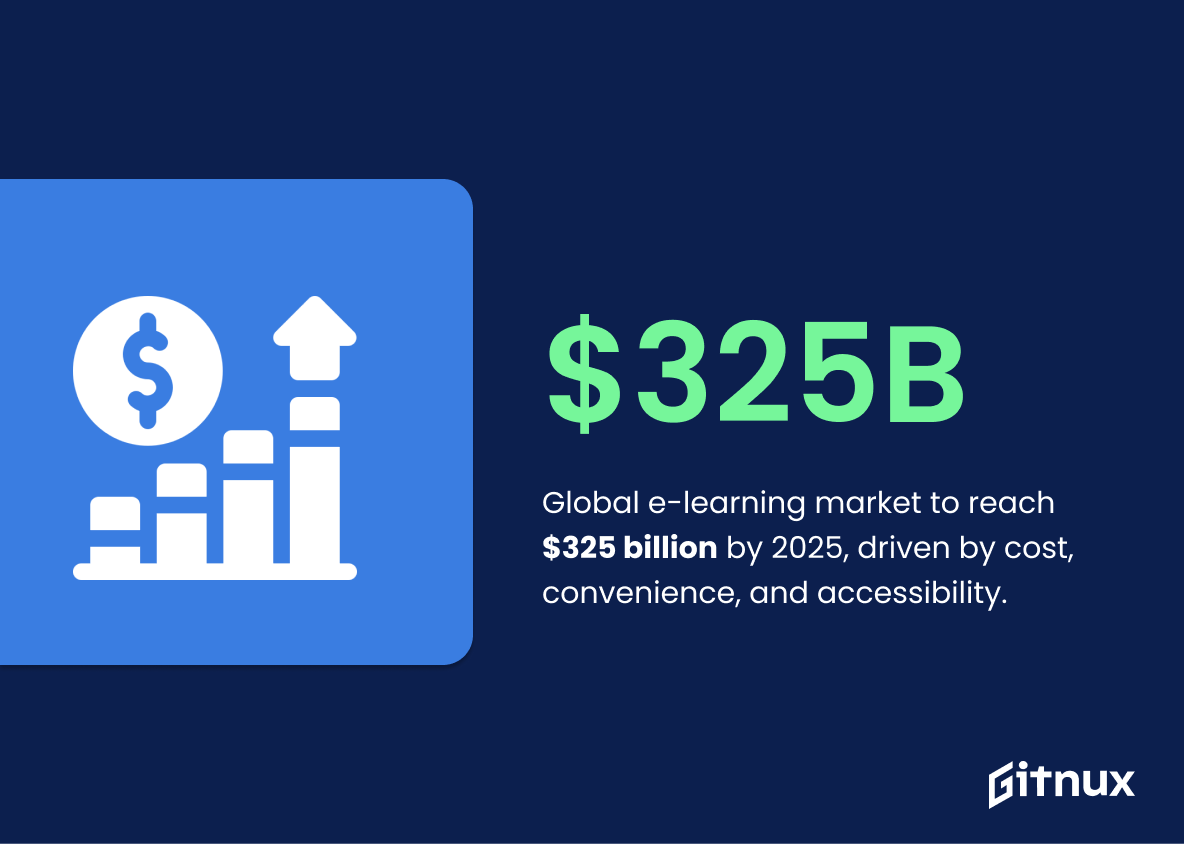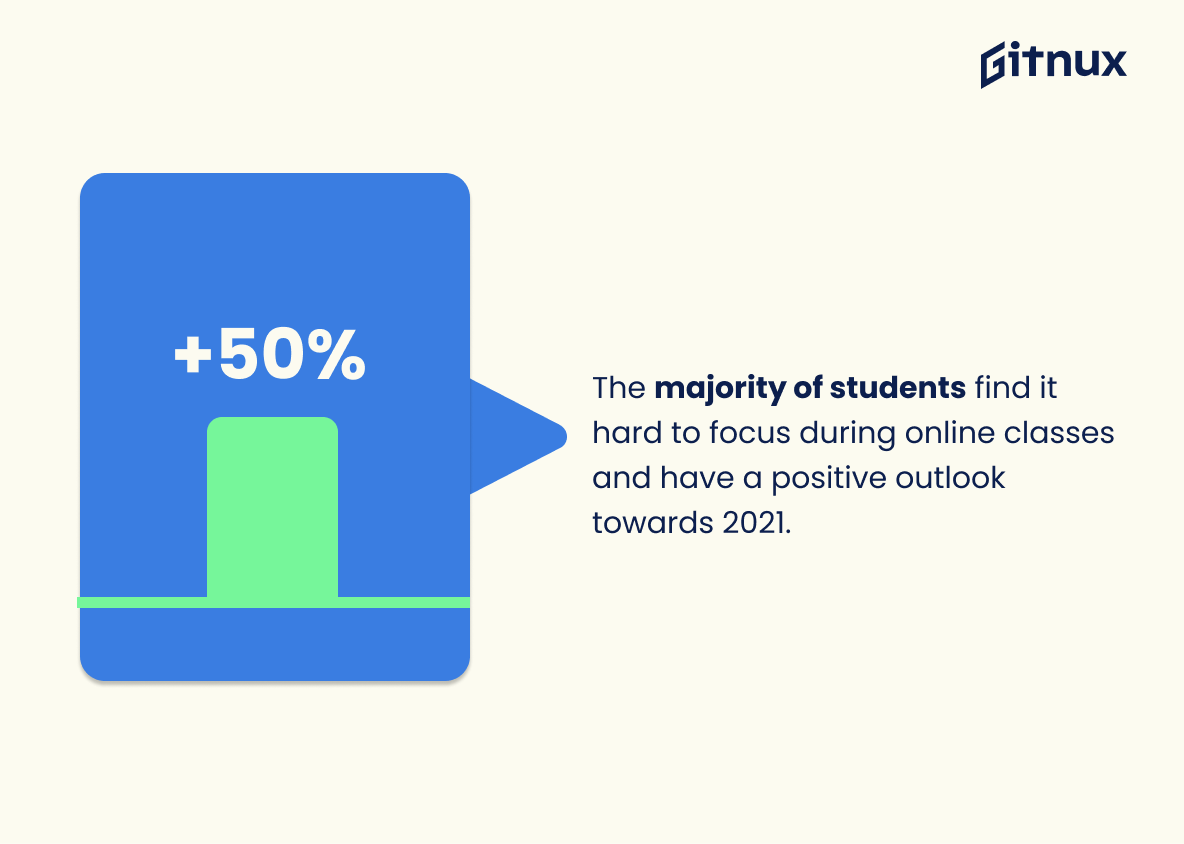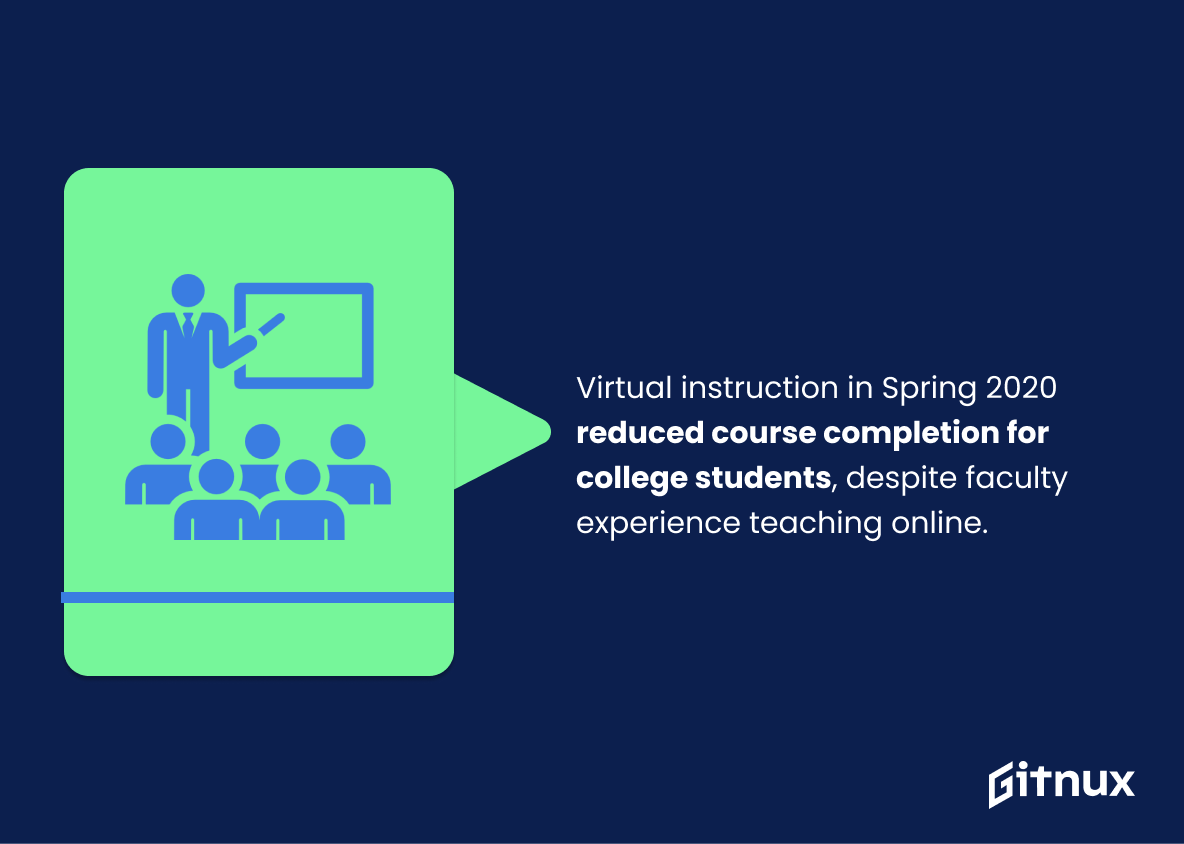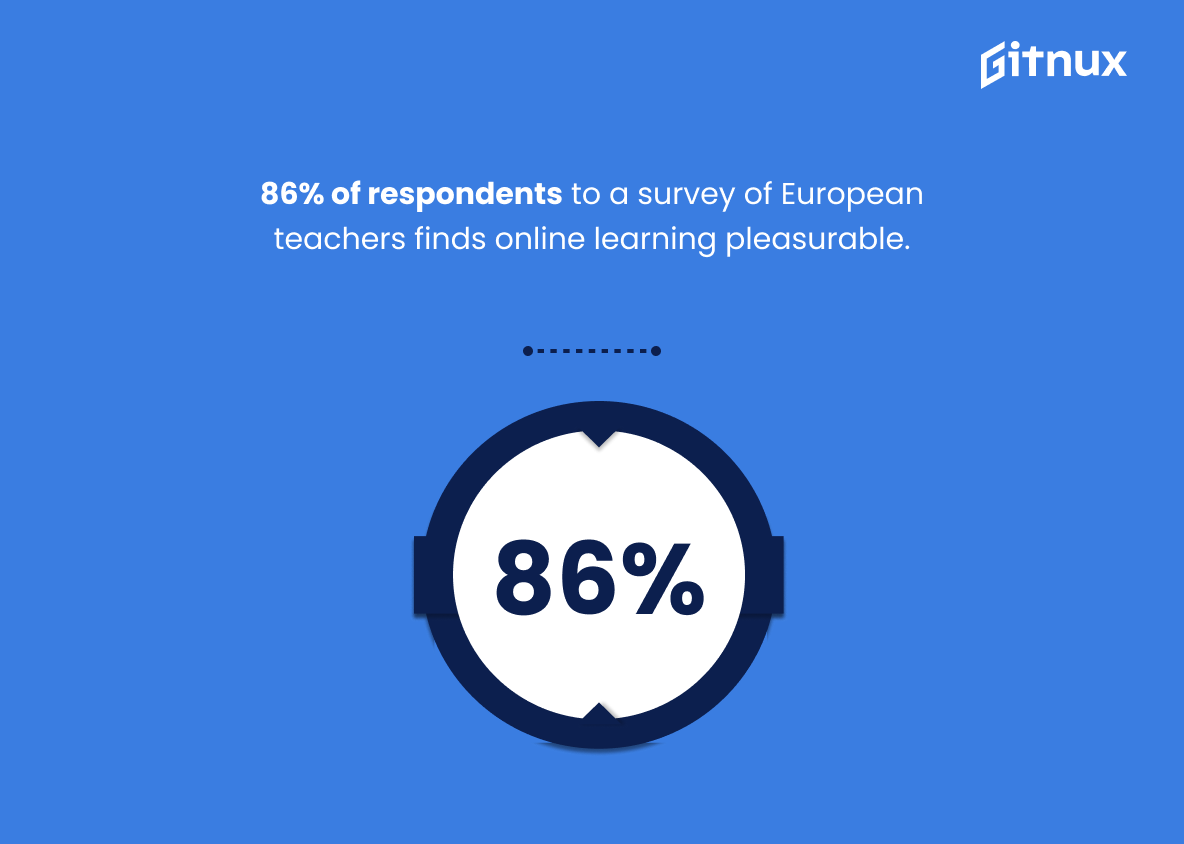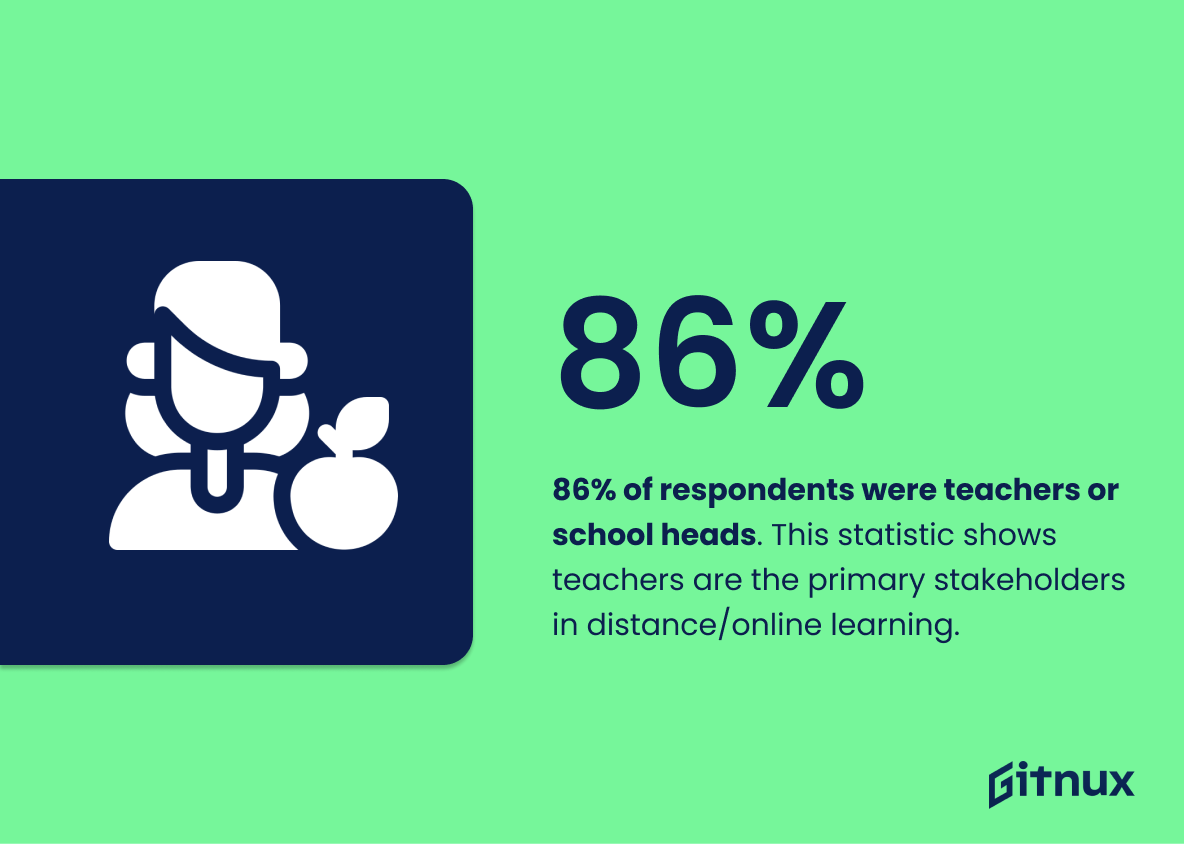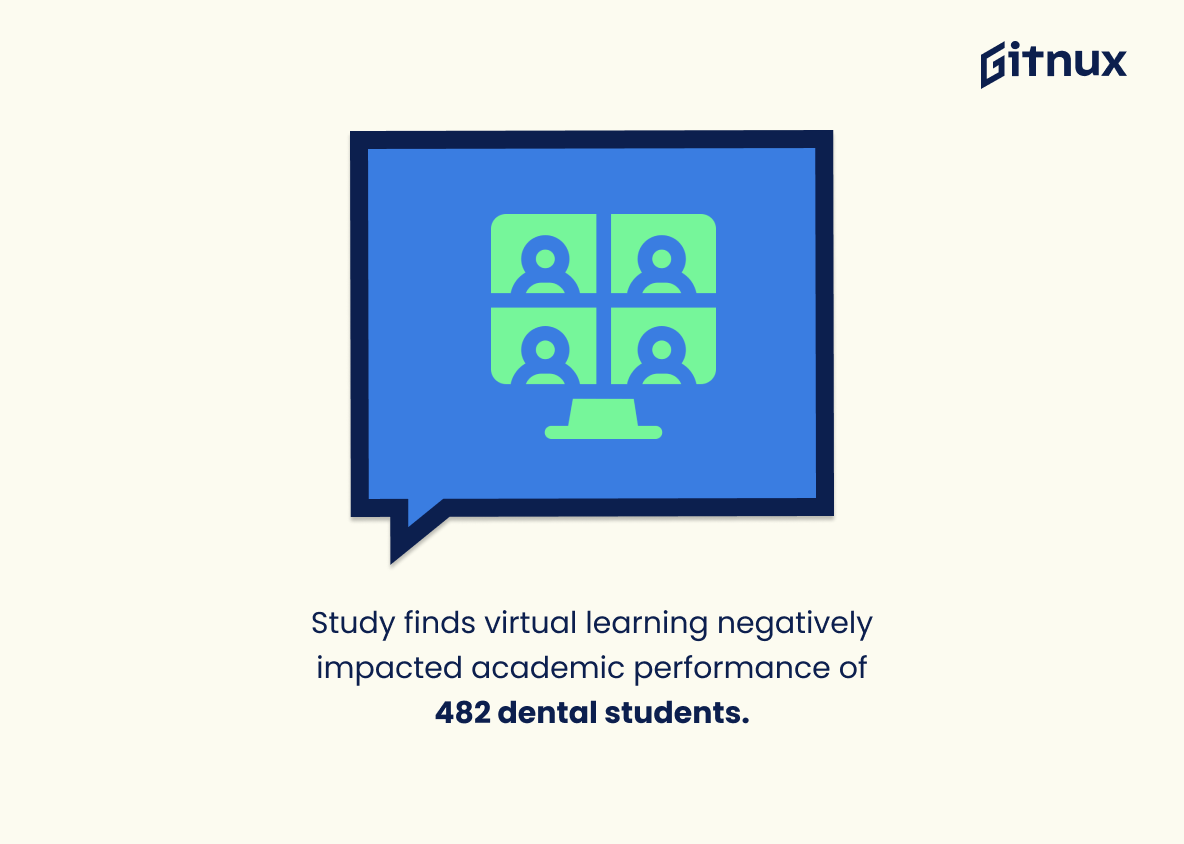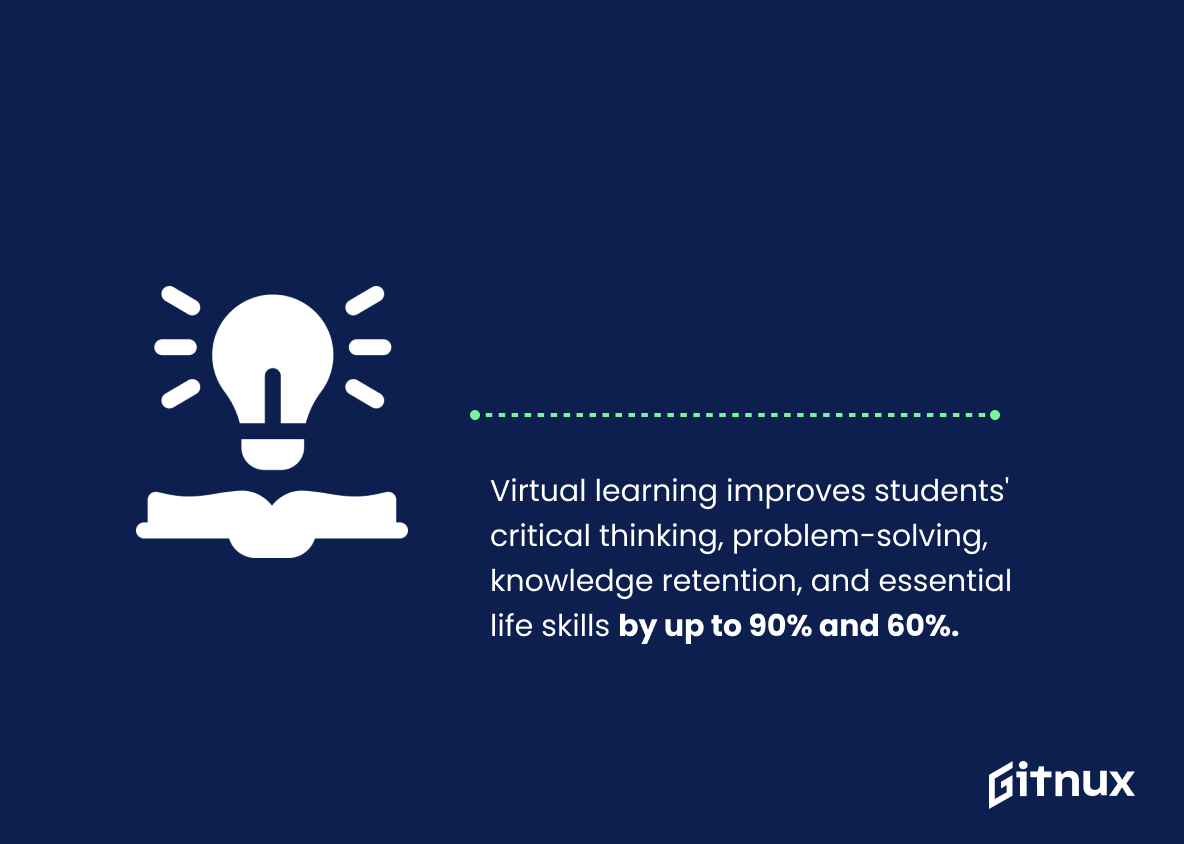As technology continues to advance, more and more students are taking advantage of virtual learning opportunities. Virtual learning has become increasingly popular in recent years, and with the pandemic, it has become even more prevalent. With this in mind, it is important to understand the current statistics surrounding virtual learning.
In this blog post, we will take a look at the current virtual learning statistics, including enrollment numbers, student satisfaction, and more. We will also discuss the potential implications of these statistics for the future of virtual learning.
Virtual Learning: The Most Important Statistics
The majority of students find it hard to focus during online classes and have a positive outlook towards 2021.
86% of respondents to a survey about distance/online learning across Europe were teachers or school heads, and they found many pleasurable aspects to online learning.
Virtual Learning Statistics: Statistics Overview
MOOCs and VLEs can be used to improve the learning process of statistics content for students, with variables related to VLE assistance, relevance and performance being correlated at the .01 level. This matters in the context of Virtual Learning Statistics, as it shows the importance of VLEs in the learning process and how they can be used as a complement to traditional college education.
The Global e-learning Market is projected to reach $325 billion by 2025, showing the increasing relevance of e-learning due to its low cost, high convenience, and accessibility.
This statistic matters in the context of Virtual Learning Statistics because it shows the increasing importance of e-Learning and its potential to become the predominant global educating force of the 21st century. This statistic also highlights the increasing relevance of e-Learning, as 67% of organizations now offer mobile learning.
41 countries experienced a decline in test scores due to COVID school closures in 2021. This matters in the context of Virtual Learning Statistics because it highlights the significant disruption that COVID-19 has had on the global education system.
This data shows that learning loss is a real consequence of the pandemic, and that virtual learning may not be able to fully make up for the disruption caused by school closures.
The majority of students find it hard to focus during online classes and have a positive outlook towards 2021.
This statistic is important in the context of virtual learning statistics because it shows how students are struggling to adjust to the new learning environment and how they are still hopeful for the future. It also provides insight into how students are feeling about the current situation and how they are coping with the changes. This information can be used to help educators better understand the needs of their students and make adjustments to their teaching methods to ensure that students are able to stay focused and engaged during online classes.
This study reviews the challenges of e-learning during the COVID-19 outbreak in underprivileged countries, highlighting the lack of technological and financial infrastructures.
This matters in the context of virtual learning statistics because it highlights the need for more resources and preparation in order to ensure successful e-learning in underprivileged countries. This is important in order to ensure that all students have access to quality education, regardless of their financial or technological resources.
This study found 8 underlying factors that contribute to student barriers to online learning.
This matters in the context of Virtual Learning Statistics because it provides insight into the potential challenges students face when engaging in online learning, which can help inform strategies for improving the virtual learning experience.
The e-learning market was worth 315 Billion (USD) in 2021, demonstrating the positive impact of the Covid-19 pandemic on the virtual learning industry.
This statistic matters in the context of virtual learning statistics because it shows that the e-learning market has grown significantly due to the pandemic, and provides insight into the potential future trajectory of the industry. This data can be used to inform decisions and strategies related to virtual learning, and can help to inform future investments in the sector.
The e-learning market was worth 315 Billion (USD) in 2021 and is expected to grow at a 20% CAGR over the next year. This statistic is important because it shows the impact that the Covid-19 pandemic has had on the e-learning industry, and how it has disrupted previous trajectories for the virtual learning industry.
It also provides a forecast for the industry post-covid, which can be used to inform decisions about investments and strategies for the future.
This survey found that 41% of current, prospective, and former online students in the United States expressed some concern about balancing education with work, family, and household obligations, and the quality of online instruction and academic support.
This matters in the context of Virtual Learning Statistics because it shows that there are still concerns about the quality of online education, and that many students are struggling to balance their education with other commitments.
This study found that the shift to virtual instruction in Spring 2020 had a modest negative impact on course completion for Virginia’s community college students, and faculty experience teaching a course online did not mitigate the negative effects.
This matters in the context of Virtual Learning Statistics because it shows that virtual instruction can have a negative impact on student performance, and that faculty experience does not necessarily make up for the lack of in-person instruction. This suggests that virtual instruction should be used with caution, and that in-person instruction should be prioritized when possible.
A survey conducted by EdWeek Research Center revealed that both teachers and students have experienced a decrease in motivation and engagement during the pandemic.This statistic is important in the context of virtual learning because it highlights the need for teachers to find ways to motivate and engage students in the virtual learning environment. If teachers are unable to motivate and engage students, then students may not be able to learn effectively and may struggle to keep up with their studies.
86% of respondents to a survey about distance/online learning across Europe were teachers or school heads, and they found many pleasurable aspects to online learning. This statistic matters in the context of virtual learning statistics because it shows that teachers and school heads are open to the idea of online learning and have found many positive aspects to it. This suggests that virtual learning is a viable option for schools and could be beneficial for students.
86% of respondents in a survey about distance/online learning in Europe were teachers or school heads. This statistic is important in the context of virtual learning statistics because it shows that teachers are the primary stakeholders in the discussion about distance/online learning.
Their opinions and experiences are essential to understanding the challenges and opportunities of virtual learning, and their feedback can help inform policy and practice.
A study of 482 pre-doctoral students in a U.S. dental school showed that their academic performance was negatively impacted by virtual learning. This statistic is important because it highlights the challenges students face when transitioning to virtual learning and the need for educators to find ways to support students in this new learning environment. It also shows the need for further research to understand the impact of virtual learning on student performance.
Online learning is more cost-effective and efficient than traditional in-person training methods, with 85% of training budgets often wasted. This matters in the context of Virtual Learning Statistics because it allows for more flexible and personalized learning experiences for non-traditional learners, while also saving money for teams that can be reinvested in real-world applications.
Virtual learning has been a success, offering students a safe option for ongoing learning with accessibility, peer learning opportunities, community building, time savings, fast feedback, increased knowledge retention, enhanced critical thinking skills, better for the environment, flexibility, self-paced study, and career preparation. This matters in the context of Virtual Learning Statistics because it shows that virtual learning is a viable option for students to receive education and offers many benefits that traditional learning does not.
Virtual learning can increase students’ critical thinking skills, problem-solving abilities, and knowledge retention rates by up to 90% and 60%, respectively, while also providing them with technology, computer literacy, emotional intelligence, and self-discipline skills.
This matters in the context of virtual learning statistics because it shows that virtual learning can be a viable alternative to traditional classroom settings, while also providing students with the skills they need to succeed in the future of work. Additionally, it is environmentally friendly, reducing energy consumption and carbon emissions.
Read more about Online Tutoring Statistics
Conclusion
Virtual learning has become an increasingly popular option for students and teachers alike. With the rise of virtual learning, there has been an increase in the number of students and teachers using virtual learning platforms.
The statistics show that virtual learning is a viable option for both students and teachers, providing flexibility, convenience, and access to a wide range of educational resources. Virtual learning is here to stay, and it is likely that the number of students and teachers using virtual learning platforms will continue to grow in the future.
References
1 – http://www.ijiet.org/vol7/831-PS019.pdf
2 – https://elearningindustry.com/top-elearning-statistics-2019
3 – https://datacatalog.worldbank.org/search/dataset/0063679/Learning-Loss-COVID-19-2020-2022
4 – https://www.studocu.com/en-us/n/12756060?sid=01674047896
5 – https://link.springer.com/article/10.1007/s11356-021-14647-2
6 – https://www.cu.edu/doc/student-barriers-online-learning.pdf
7 – https://www.statista.com/statistics/1130331/e-learning-market-size-segment-worldwide/
8 – https://www.gminsights.com/industry-analysis/elearning-market-size
9 – https://www.statista.com/statistics/944409/concerns-about-choosing-online-education-usa/
10 – https://www.edworkingpapers.com/sites/default/files/ai20-299.pdf
11 – https://www.weforum.org/agenda/2022/01/online-learning-courses-reskill-skills-gap/
12 – https://www.weforum.org/agenda/2020/04/coronavirus-education-global-covid19-online-digital-learning/
13 – https://www.edweek.org/leadership/data-snapshot-what-teacher-and-student-morale-looks-like-right-now/2021/01
14 – https://www.schooleducationgateway.eu/en/pub/viewpoints/surveys/survey-on-online-teaching.htm
15 – https://www.schooleducationgateway.eu/en/pub/viewpoints/surveys/survey-on-online-teaching.htm
16 – https://link.springer.com/article/10.1007/s40670-021-01231-z
17 – https://www.mckinsey.com/industries/education/our-insights/demand-for-online-education-is-growing-are-providers-ready
18 – https://www.mckinsey.com/industries/education/our-insights/five-trends-to-watch-in-the-edtech-industry
19 – https://www.weforum.org/agenda/2021/03/classroom-teaching-better-than-remote-learning-education/
20 – https://bmcmededuc.biomedcentral.com/articles/10.1186/s12909-021-02909-z
21 – https://www.forbes.com/sites/forbestechcouncil/2021/03/26/five-reasons-online-learning-is-the-future-of-professional-development/?sh=6cadcf33fc70
22 – https://www.schooliseasy.com/tutor/tutor-blog/benefits-of-virtual-learning/
23 – https://bau.edu/blog/virtual-learning-in-higher-education/
24 – https://www.contemporarypediatrics.com/view/how-did-virtual-learning-impact-youth-
25 – https://bigthink.com/plus/challenges-of-online-learning/
26 – https://camudigitalcampus.com/virtual-classroom/three-major-challenges-of-virtual-classrooms-and-how-to-overcome-them
27 – https://www.ispringsolutions.com/blog/best-online-learning-platforms
28 – https://www.forbes.com/sites/forbes-personal-shopper/2022/02/28/best-online-learning-platforms/?sh=49d8aa6a17d0
29 – https://www.prodigygame.com/main-en/blog/virtual-learning-tools/
30 – https://www.online-tech-tips.com/software-reviews/best-online-tools-for-distance-learning/
ZipDo, cited June 2023: Virtual Learning Statistics
